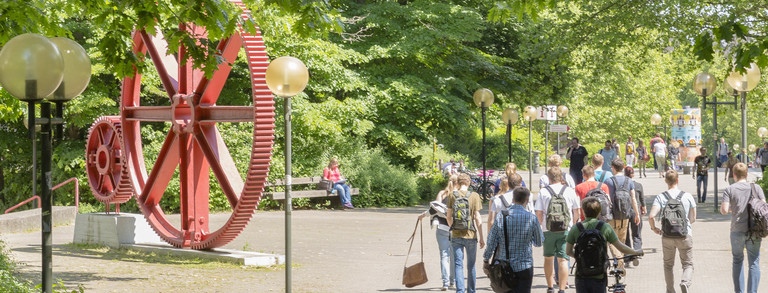Bring Your Idea into Reality: Design and Implement Your Own Embedded Systems (English)
Modul
Design of Embedded Systems
NEWS:
Please send us your preference for different topics.
Deadline: 19th of April 2021
Explanation of SS2020
Due to the corona crisis, TU Dortmund suggests to host the lectures in the summer semester 2020 completely online unless there is any further notification in the future. The organization team of the Fachproject discussed possible forms to host this course online. However, this is basically impossible even if the university opens in May. After brainstorming, we have decided to bring your idea to online projects. We will design some small projects which can be completely carried out online without any specialized hardware requirement. We will give a wide range of project topics that range from embedded machine learning, real-time operating systems, hardware/software codesign (in simulation), and cyber-physical systems (in simulation). Some of them can be further continued as Bachelor thesis topics if you would like. We will first host a seminar meeting to introduce the topics that are offered from our side. You are then requested to join one of the projects designed by us or form a team of 3 people with your own ideas. If you do not like this transformation and would not like to participate in the new format of this Fachproject, please kindly let me know. I will help you de-register from this course.
Decision of SS2021
Due to the unknown future of SS2021, we decided to provide an online version of Fachprojekt in the upcoming summer semester 2021 as well. We provided 3 sub-topics which are related to embedded systems, and each student can make a decision to join one of these sub-topics.
Organization
- We have in total 24 students, and each group can have at most 3 students.
- In the first meeting, supervisors will give brief presentations to introduce the topics. Each group can select one of these topics and work on it.
- In the end, each group have to give a talk to present what they have done and submit a report.
Downloads
- Sicherheitsanweisungen hier
- Report Template
Topics
- Build your own CPU in Minecraft introduction slides
- up to two groups
- Supervised by Christian Hakert
- Minecraft, as a popular computer game, implements the basic of boolean algebra and therefore allows to build arbitrary binary (digital) circuits. In this project, students should start from simple logic gates, design components like adders, multiplexers, memories, ... and then assemble them to a minimal computing core, executing a very simple program. The groups are free in their design decisions.
- Design Your Own CPU introduction slides
- Up to two groups
- Supervised by Mikail Yayla
- In this project, the students first learn the basics of VHDL to build a single cycle MIPS processor that can execute a few selected instructions (lw, sw, addi, beq, etc.). Then, the students are expected to either implement extensions for this processor or design a completely new processor from scratch.
- Deploy Machine Learning Applications on A Swarm introduction slides
- Up to two groups
- Supervised by Junjie Shi
- In this project, the students first establish a simulation based platform, i.e., Paparazzi UAV (detailed can be found in https://wiki.paparazziuav.org/wiki/Main_Page). Afterwards, a distributed embedded system is designed, i.e., a swarm consists of several drones. Each drone can be considered as an embedded system. Then, an ensemble learning algoritm is implemented, e.g., detect an item using several images from different points of view that are obtained by different drones. In the end, the perforamnce of the application on the system is evaluated.
- Benchmarking batteryless systems design paradigms introduction slides
- Up to two groups
- Supervised by Mojtaba Masoudinejad
- There are multiple design strategies for developing batteryless systems using pure hardware or software and their combination. However, each one performs better in some specific application type.
The idea in this project is to develop scenarios according to the real world case studies. Then after studying available design paradigm they have to be applied and checked on the experiments to evaluate their performance.
TI MSP430FRxxx will be used for the development and implementation of the benchmark experiments.

